After Xi’an I headed to Panda City, otherwise known as Chengdu. Chengdu is located in the southern Sichuan Province of China and is home to 80% of the wild panda population and many breeding centers and sanctuaries. The most famous sanctuary is Wolong, but it was badly damaged during the 2008 earthquake and the pandas were moved to other sanctuaries in the area. The biggest sanctuary near the city is the Chengdu Research Base of the Giant Panda Breeding, located only 30 minutes outside of the city. I can only describe this center as a kind of Disneyland for pandas.
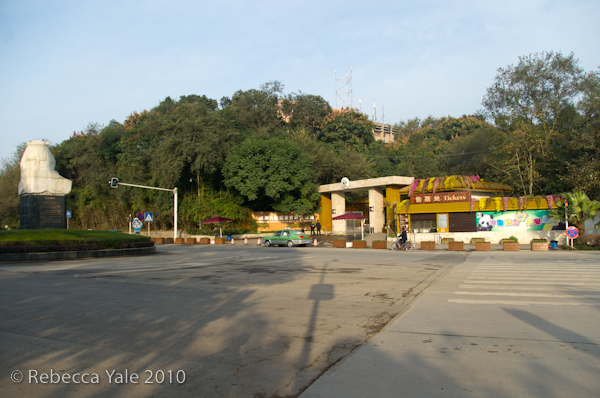
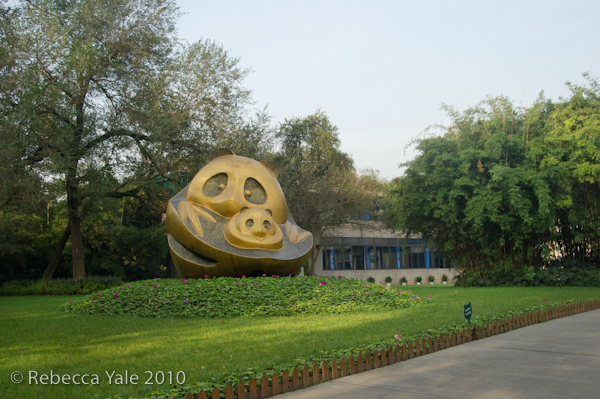
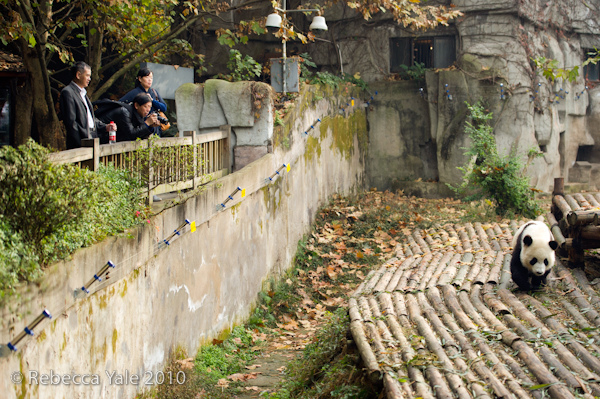
The center is doing a lot of very important research and breeding work, but unlike the center in Shaanxi it has been made for tourists to come visit, learn, and enjoy the adorable panda. The sanctuary is gigantic and I would suggest an entire day is needed to explore it in full. There are many different enclosures where you can see adult, sub-adult, toddlers, and babies. The babies were probably the cutest things I had ever seen, but the center has strict regulations against photographing them, even without a flash so no pictures to share. I do have many adorable pictures of the toddlers and adults so enjoy those below.



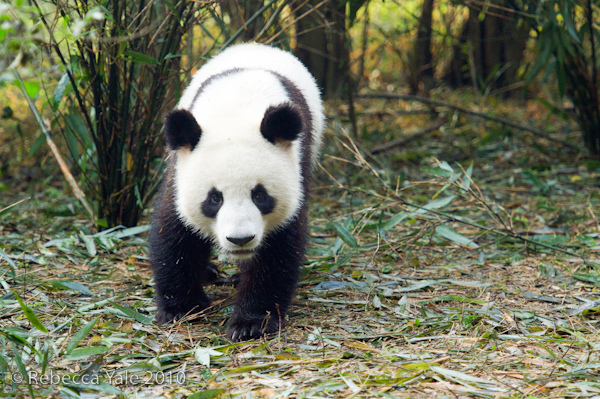
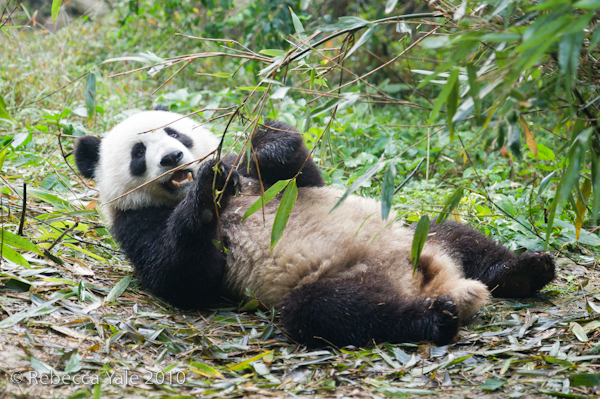


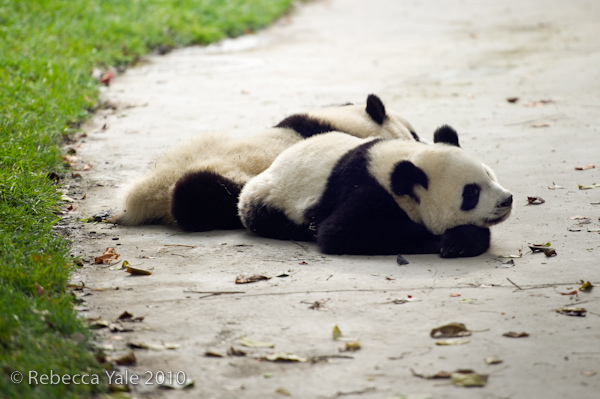

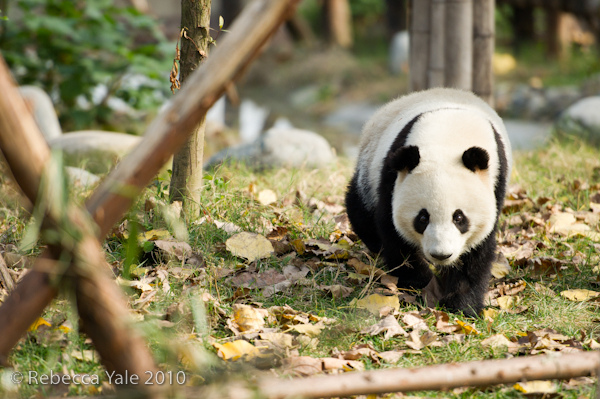

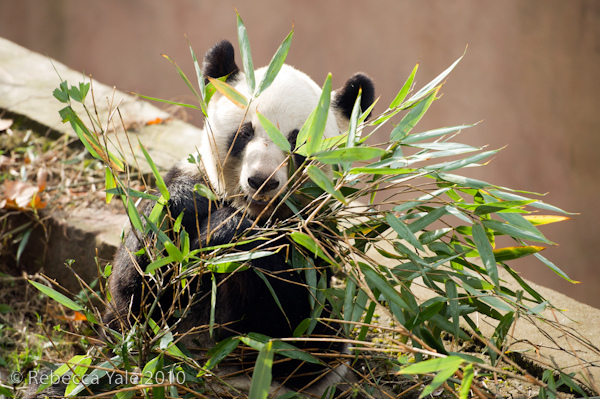
The base has red pandas on display as well, but the females are currently pregnant and the enclosure was closed to the public while I was there. The base also has a few other types of endangered animals, but they are there for research and cannot be viewed by the public. The center also has beautiful wildlife including many birds flying around and a large Koi pond where you can buy food and feed the fish and black swans. Feeding the Koi is really fun to watch because they get very animated and hundreds of them will swim to the edge and pile on top of each other to get the food. The pond is close to one of the sanctuaries restaurants and has a nice outdoor area and is a wonderful place to take a break.

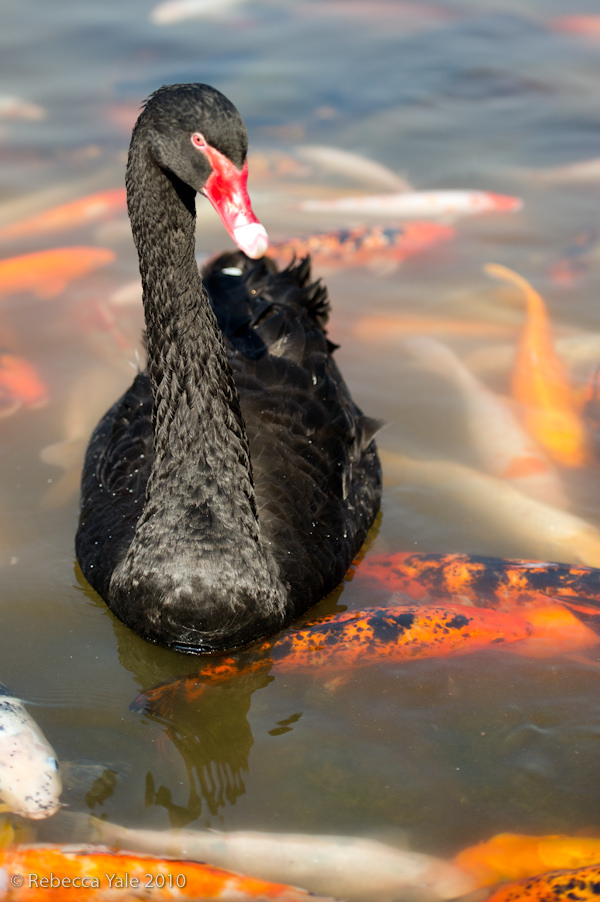
The center is doing a lot of great work to protect the panda and works in conjunction with the WWF. To read more about the center click here and to learn more about the panda and what you can do to help save them click here.
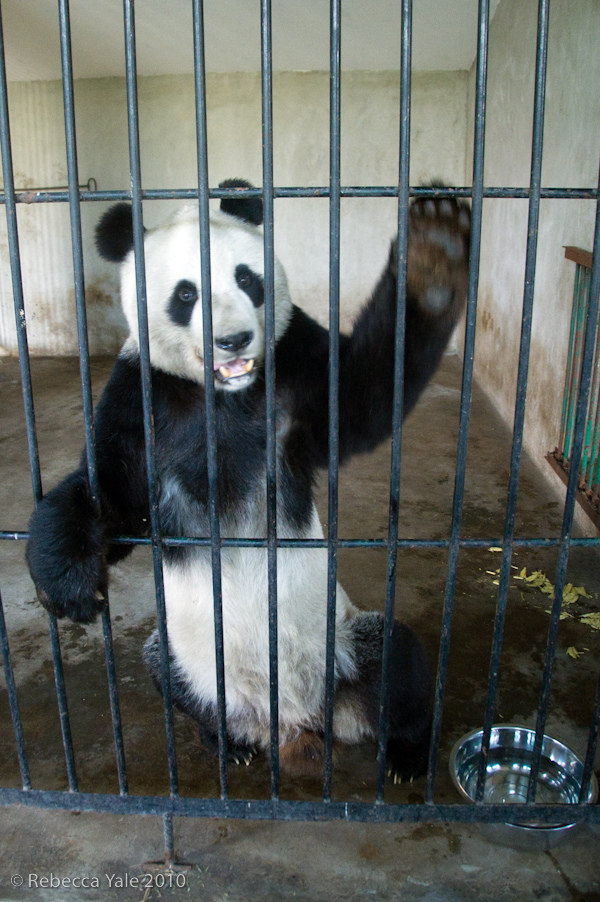
While at the Shaanxi Wild Animals Rescue and Research Center I took care of two pandas Zhu Zhu (female) and Ding Ding (male), both adults who had both successfully bred and had babies. Each day my duties consisted of cleaning their cages twice a day and feeding them twice a day. Each panda has their own suite of cages, which is attached to their outdoor garden area by a tunnel. When we clean the indoor cages we lock them into an adjacent cage because as cute as they are their teeth and claws can do serious damage to us. Many a time Zhu Zhu was in a playful mood and would try to swipe my mop or broom through the bars. One time I left the basket of bamboo leaves and poop too close to her cage and she picked it up and shook it out undoing the 30 minutes of work I had just done. Everyday, twice a day, we came in and picked up all the old bamboo, then swept up the old leaves and poop (which is basically just reconstituted bamboo and has no smell) and then once a day we mopped the cage with a mixture of water and as my panda handler called it “magic cleaning medicine” which I’m pretty sure from the smell was just bleach.
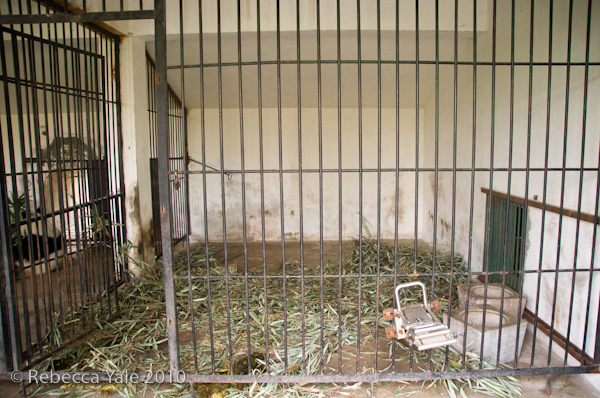
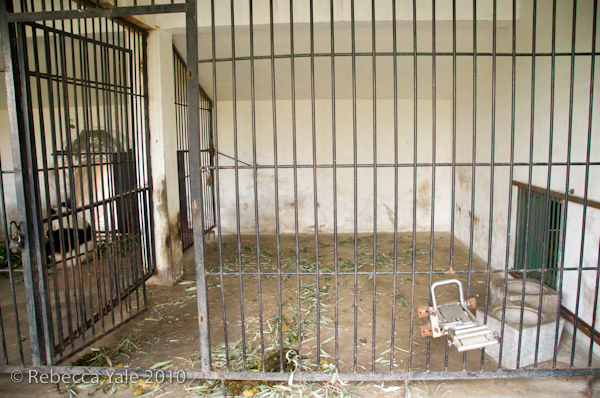
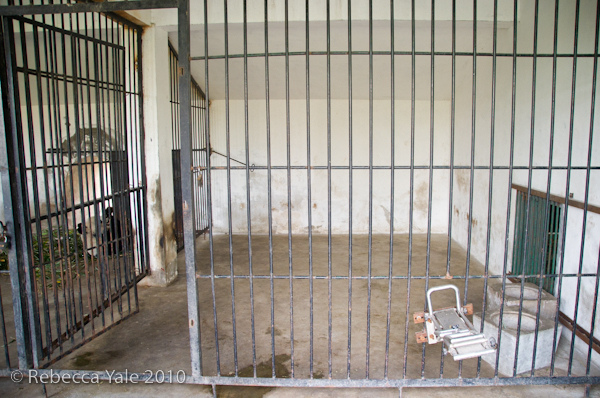
My favorite time of the day was the two feeds. In the morning we fed them a handful of apples, a piece of panda cake (a cake made of vegetables and vitamins) and then a special milk formula made with water, powdered milk and raw eggs. We also give them plenty of bamboo to munch on all day, but they really love the apples and get very excited at feeding time. Their teeth are very sharp and sometimes they get over excited and can bite so I was not able to hand feed them, but for Zhu Zhu my handler gave me a bamboo stick and I was able to spear the apples and feed them to her that way. Zhu Zhu loved having to apples at a time and when I gave her them she would sit down with one in each hand and smile before gobbling them down. Ding Ding loved his panda cake and would let me break it into little pieces and toss it into his open mouth, which was fun, but my aim isn’t great and he would eventually get frustrated so I always ended up just giving him the whole loaf after a minute or two. They were both wonderful pandas and I miss them both very much!
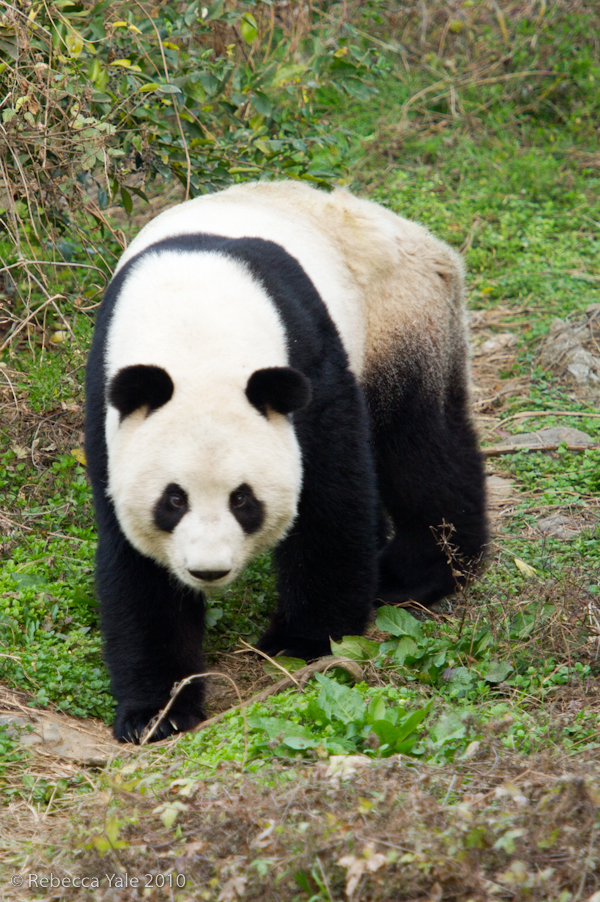
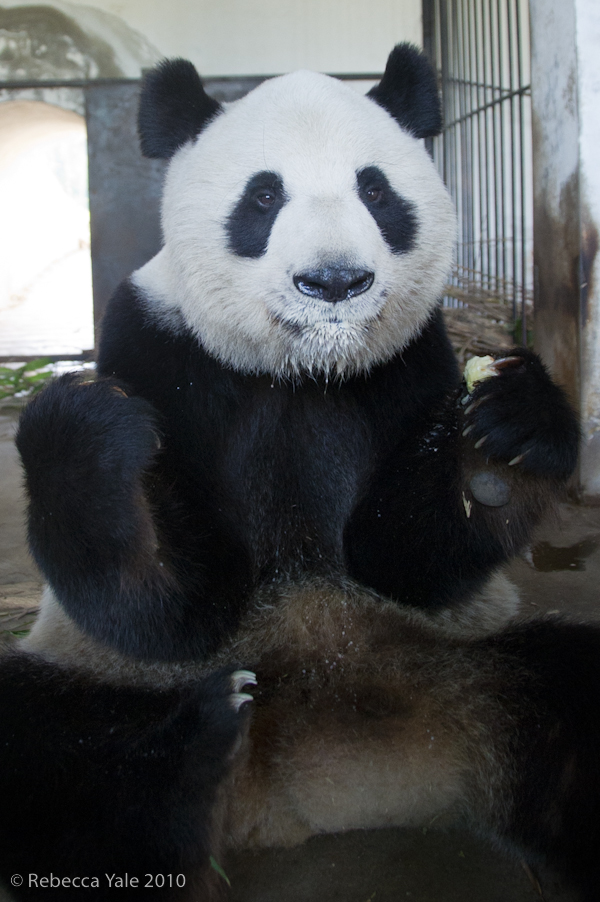
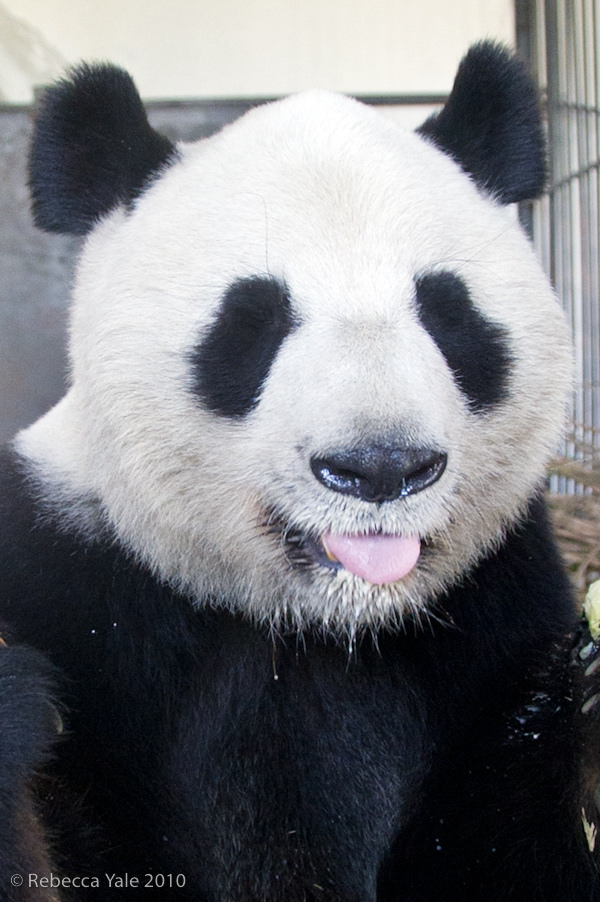
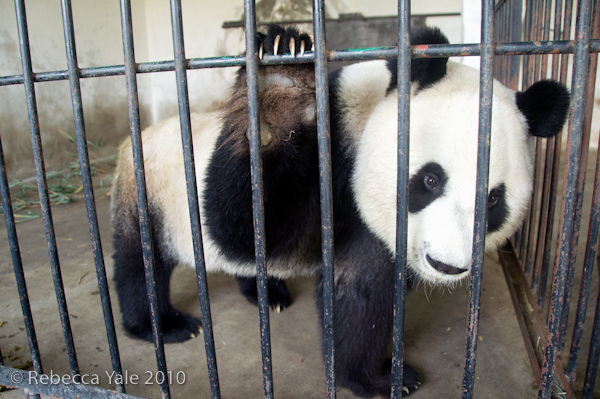
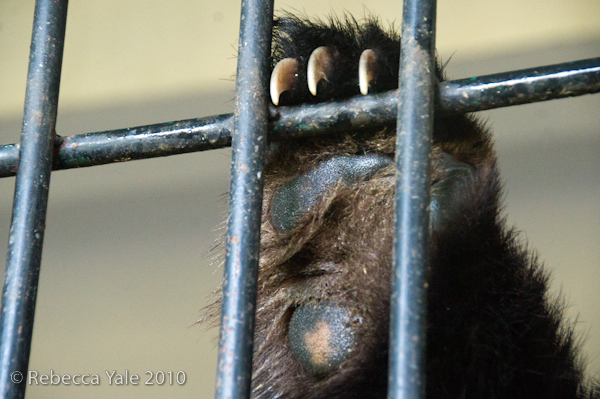
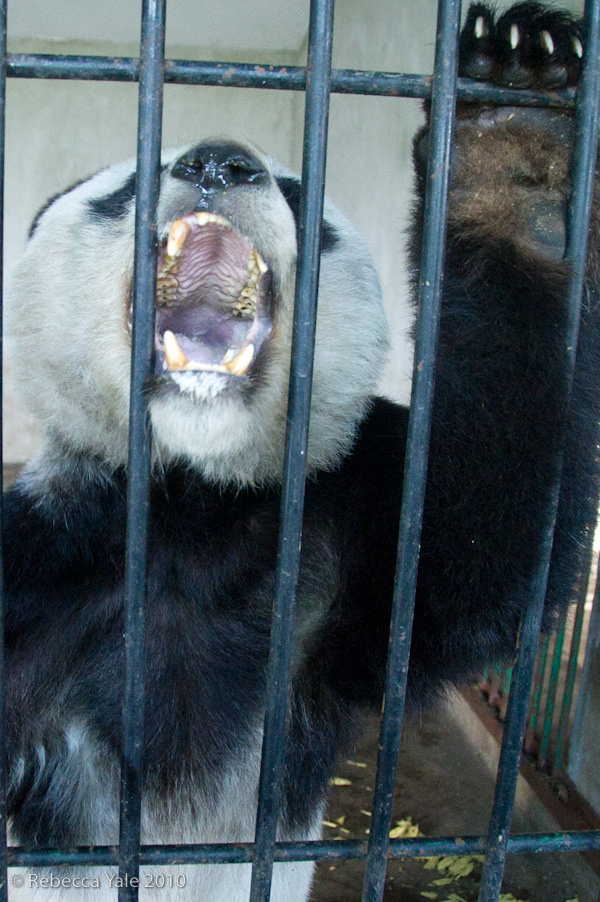
My first stop on my panda adventure in China was at the Shaanxi Wild Animals Rescue and Research Center. This was my last trip with i-to-i (thank god!) and I volunteered there for one week. The center is located just an hour outside of Xi’an a the base of the Quinling Mountains, but unlike the sanctuaries in Chengdu it is relatively unknown and does not get too many tourist visitors. However there were a few Chinese tourists and one day when I was inside my pandas outdoor enclosure cleaning out the old bamboo a group of Chinese boys came by and actually started to take pictures of me inside the cage. I had been saying the whole time in China that I felt like an animal in the zoo having people take pictures of me and now it was finally happening. They stayed for almost a half an hour snapping pictures and yelling hello since it was the only English word they knew. Other than that experience, my time at the center was pretty good.
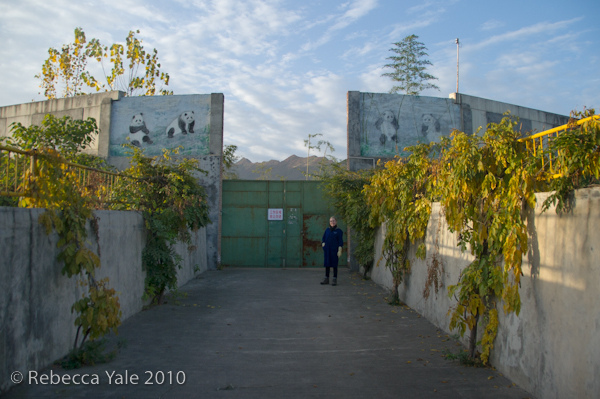
The center is home to many animals including pandas, red pandas, Asiatic black bears, golden monkeys, takins, and crested ibis’, but I only was able to work with the pandas. There were also many interesting wild birds that fly around the sanctuary and a ton of insects including some gigantic spiders.
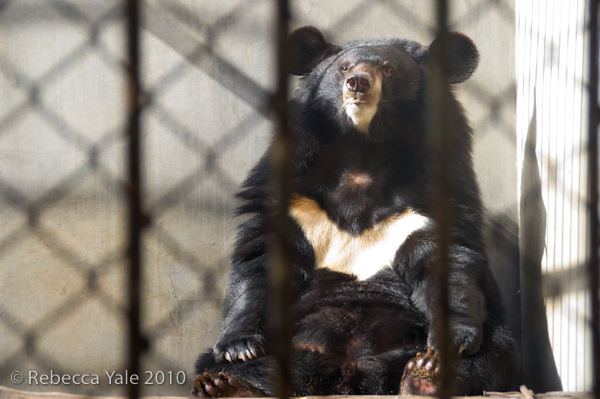
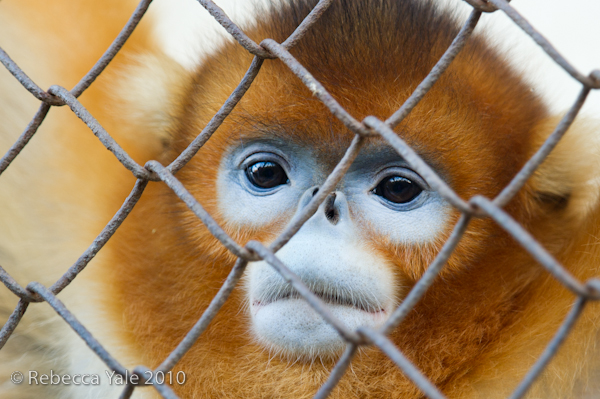

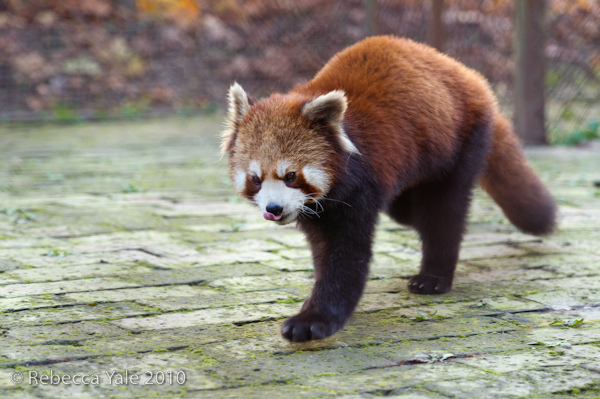
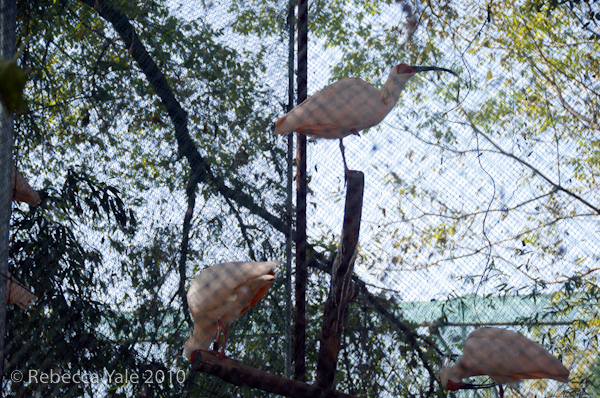
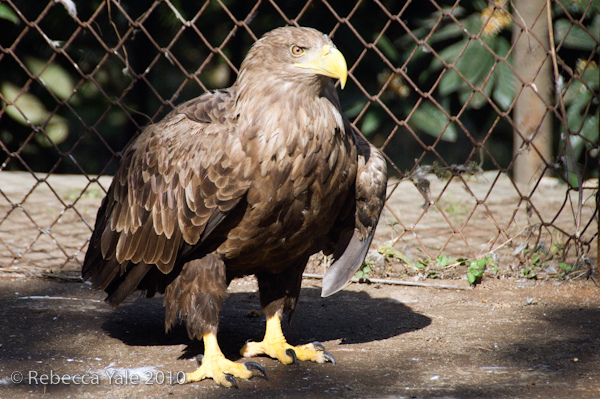
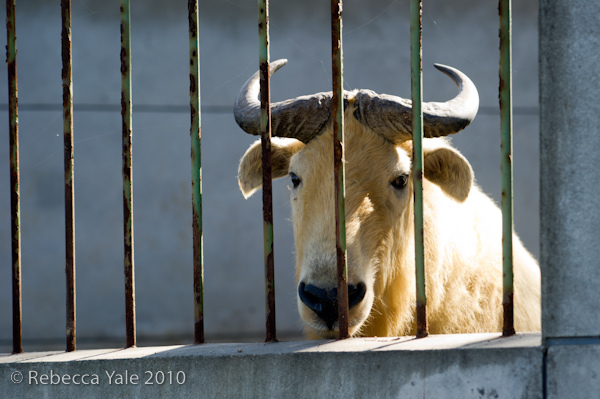
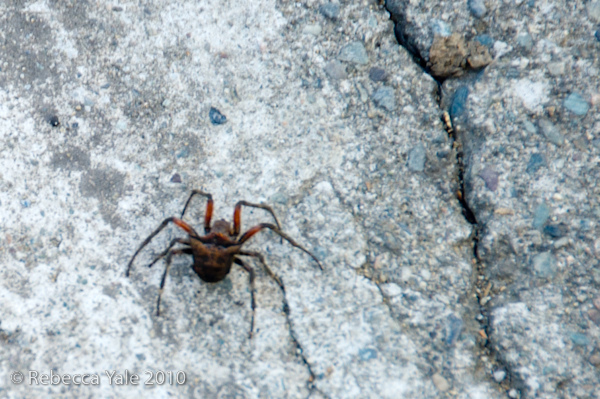
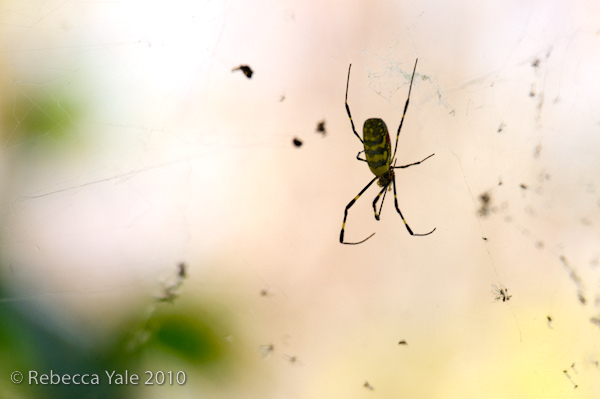
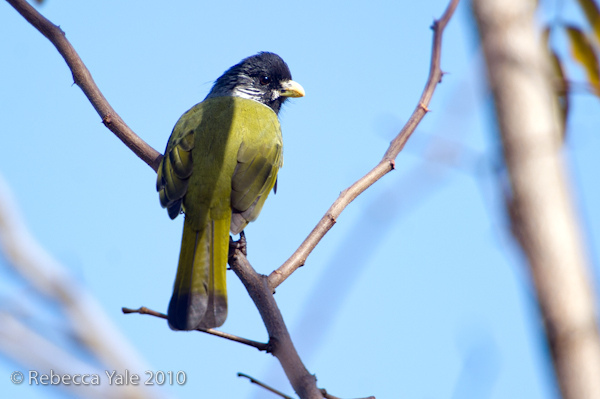
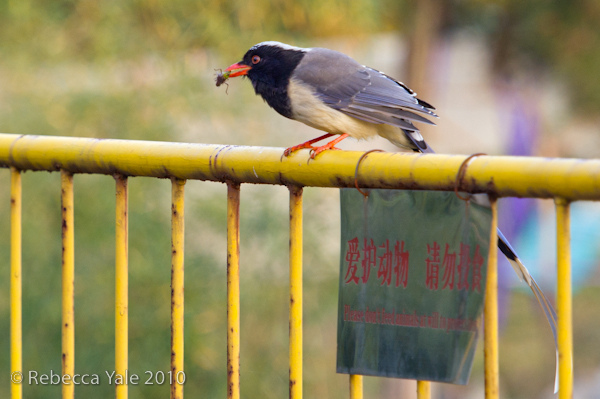
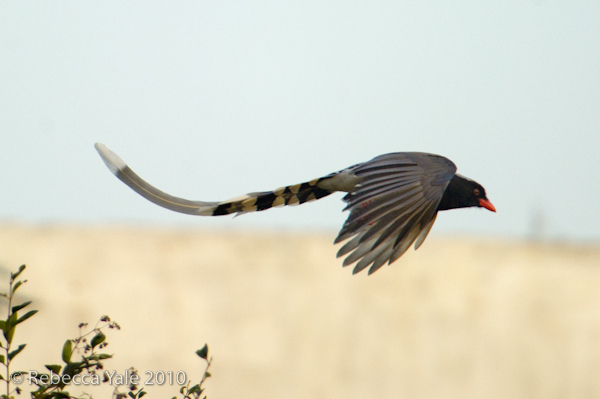
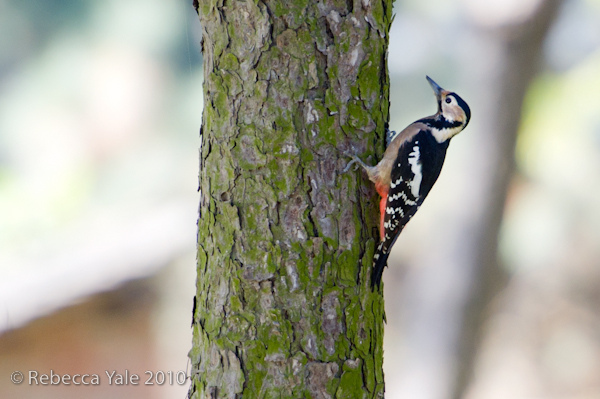
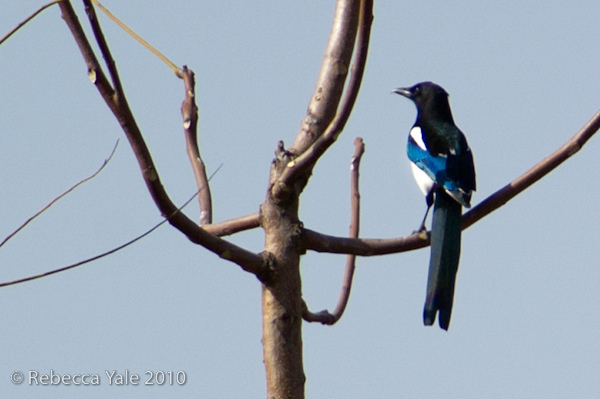


There was also a very endangered cloud leopard at the sanctuary, but I never got to actually see it and therefore never got a picture of it. The leopard was kept in a very small cage with no natural environment area and always stayed hidden in the dark inside area of his cage and hissed when people walked by. I asked many times what he was doing there, but was never able to get an answer. The Chinese do a wonderful job conserving their pandas, however the other animals didn’t seem to be treated very well. All the other animals were in small cement cages with no natural environment area like the “pandas gardens” as well called them. Historically in China big cats have never been treated well and China has the largest black market for endangered animals. Mao declared tigers and Leopards pests during the Great Leap Forward in the 1950’s and the South China Tiger’s numbers went from 4,000 to less than 200 in 1982. Hunting was banned in 1977, but the damage was already done and now according to IUCN they are suspected to be extinct in the wild with possibly less than 50 remaining in captivity around the world. There is actually a new project breeding them in South Africa similar to the breeding of the Bengal tiger there, because it is just not safe right now to breed them in China.
As I said before though, the Chinese are doing a great job conserving their pandas. Pandas are located in two provinces of China- the Shaanxi Province in the north and the Sichuan Province in the south. The pandas at the center are part of a breeding program for the Shaanxi pandas and will most likely remain in captivity their whole lives. When I asked about eventually returning them to the wild I never got a straight answer. The government controls all of the conservation efforts and in communist fashion it was all very hush hush when it came to asking questions about policy.
While at the center each volunteer is assigned to two pandas and is responsible for helping to feed them and clean their cages. Some centers do let volunteers interact with the smaller pandas, but the center I was at had a zero interaction policy for the safety of both the pandas and volunteers. Pandas are susceptible to human diseases and before volunteering you must get a note from your doctor saying you have no communicable diseases that you could pass to the pandas. I took care of two pandas by the name of Zhu Zhu and Ding Ding, a girl and a boy respectively. They were beautiful, sweet and adorable animals who I will dedicate a post to soon.
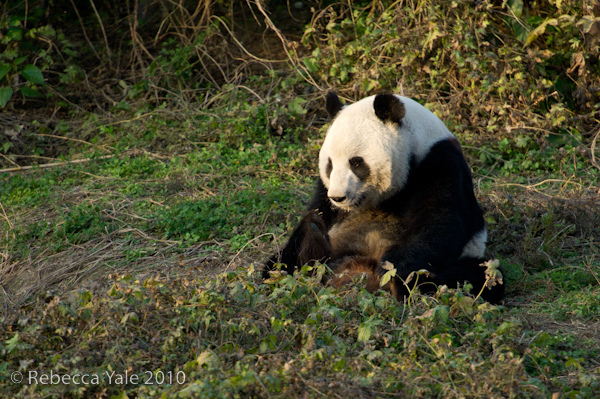
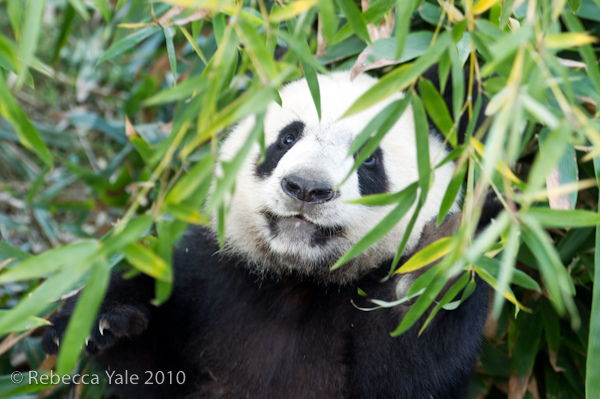


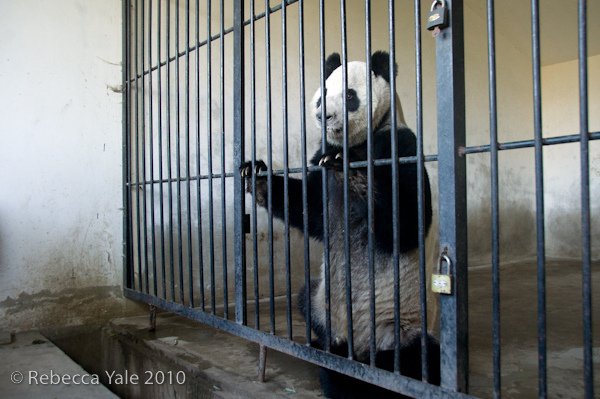
One of my favorite things to do at the sanctuary was watch the babies play in their enclosure. The sanctuary had 5 babies around 1 year old while I was working there. At that age they are very active and will play in their garden, rolling around, climbing trees and exploring their domain.
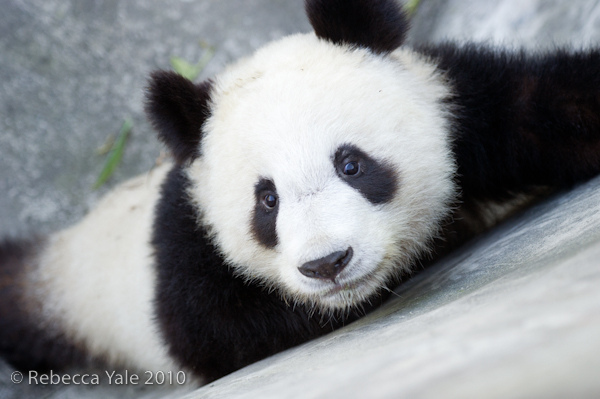
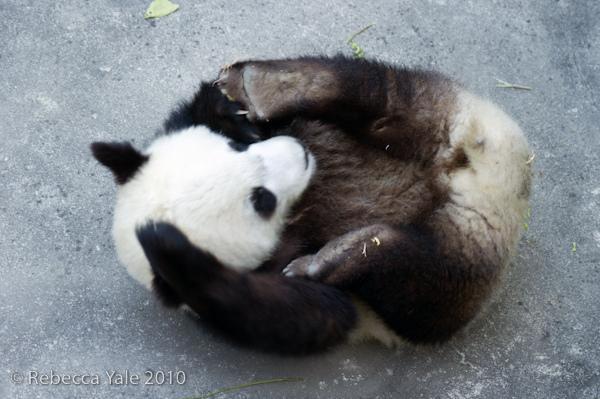
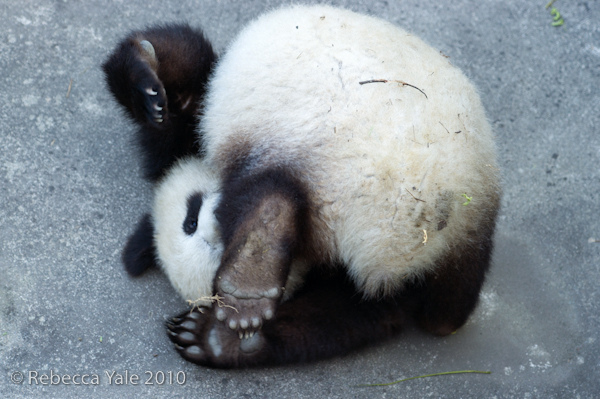
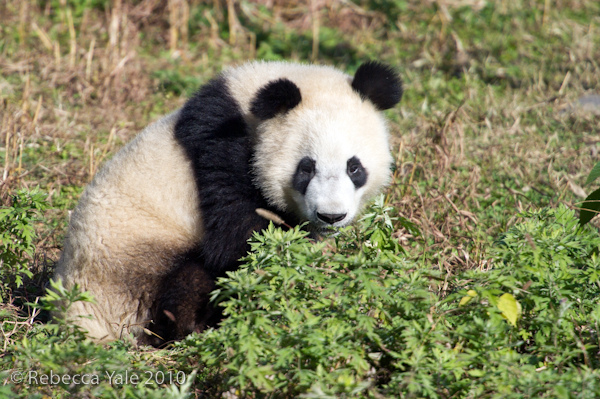
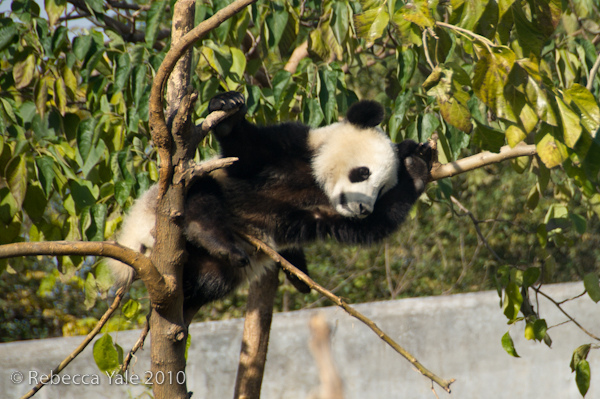

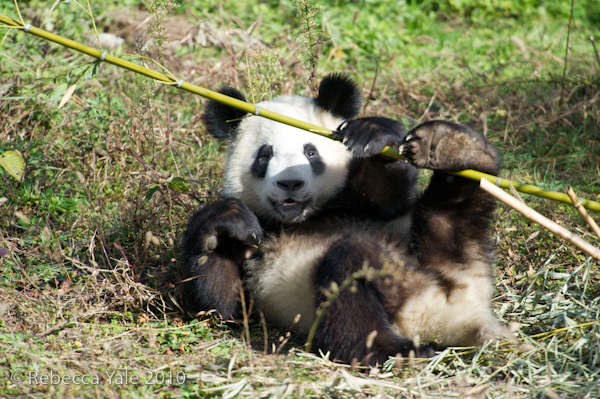
There was one very rare brown and white panda at the center, which is the only one of its kind in captivity right now. When I asked at the center why it was a light brown color I was told it was a very rare sub-species only found in this area. However, after a little research online I found that it is actually a genetic mutation that occurs from too much in breeding from the same pool of genetics. Not a surprising fact given that the genetic pool for the panda is quickly dwindling and because of new roads in the Qinling Mountains it is very hard for the pandas to reach a new genetic pool in the wild. Again tthe sanctuary was very hush hush about the aberration and I suspect they would not give me a straight or truthful answer because it was negative.
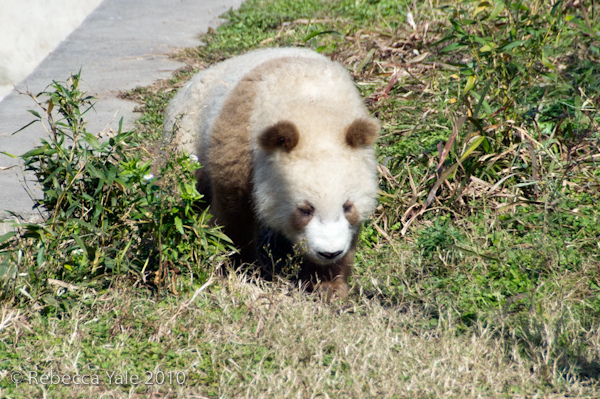
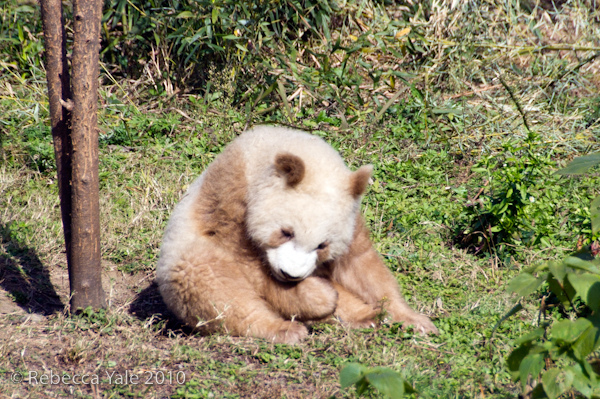

There is hope for the beautiful panda bear and while this sanctuary and the others in Chengdu are doing a good job breeding them, they will not be safe until humans change their actions. Their main threat is habitat destruction due to our actions and it something humans can stop. To read more about the panda and learn more ways in which you can help check out the WWF.